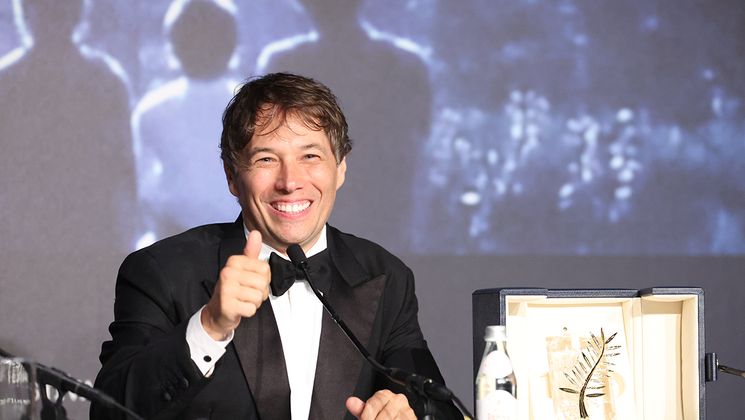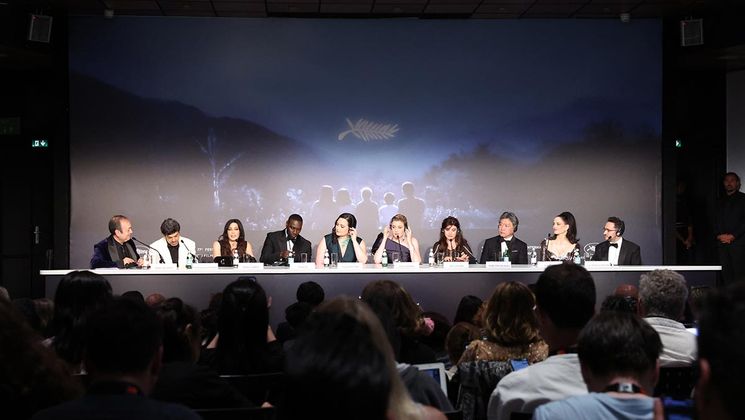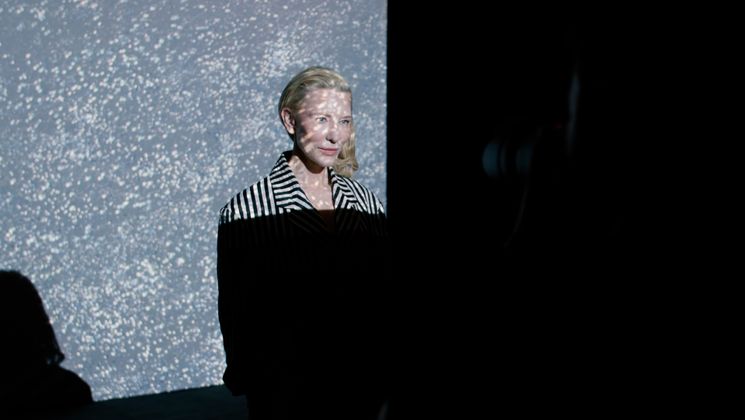
Drôles de Guerres, Jean-Luc Godard’s final gift to the screen

A few months before he left the screen for all eternity, Jean-Luc Godard put the finishing touches to a one-of-a-kind, nineteen-minute short that the Festival de Cannes is honoured to present in a world première. Fabrice Aragno, one of his closest colleagues, reflects on how Drôles de guerres came to be — a film that sets out to ‘shape thought‘.
“After The Image Book (2018), Jean-Luc wanted to adapt Charles Plisnier’s Faux Passeports (1937), a novel comprised of multiple chapters, each shadowing a different character living between the October Revolution of 1917 and the thirties. His idea was to create a film that would focus on two of these characters, one of whom is called Carlotta. He had structured the script into six chapters, the “first perfect number“, as he liked to say. He began by creating a book of collages based on these chapters, and the months passed.
For some of the film’s chapters, Jean-Luc wanted to shoot in 35 mm black and white, 16 mm and Super 8 in colour. He wanted to get back to the old ways of making films, the ways he started out with, but with the distance of experience. It was January 2020, and as he made headway, I began the technical tests, but the Covid pandemic and series of lockdowns slammed the brakes down on our progress. Jean-Luc continued working on paper, developing successive versions of the script until he decided he wanted to make a trailer. It was a sort of snapshot of the film to come, a path that led back to its origins, and through it, the film already existed!
“Jean-Luc was a filmmaker until the day he died. And because this film is alive, he remains a filmmaker today.”
Jean-Luc worked on his little wooden table, using half-sheets of A5 paper, glue, Tipp-Ex, paint, photos. He put together a brochure of fifty-odd pages, with each page illustrating a scene. He then entrusted it to me, with indications of how many seconds each should last, which varied wildly. I scanned the brochure, and then on a digital editing table, I assembled the pages, applying each of his instructions methodically, until I arrived at a silent film. He then sent me a hand-sketched timeline with extracts of film audio and sound archives to pair with the scenes. The film has two sections where you can hear music.
I remember editing the film on my kitchen table, gazing out over the Lémand. When I hit play, I was utterly gripped. Jean-Luc had imagined the pace and rhythm of the film on paper, using Post-its and indications for the images and sound. And I watched it all unfold before my eyes. It’s cinema of the present moment. It’s incredibly simple, but the way the images and sounds are arranged — sometimes somewhat abruptly — is extremely powerful. Jean-Luc saw the film’s final cut and said it was his best film.”
A Saint Laurent by Anthony Vaccarello and Vixens production, co-produced by L’Atelier.


